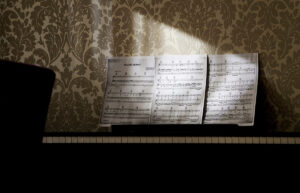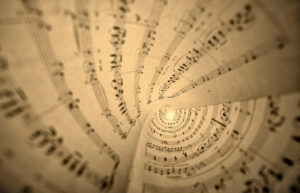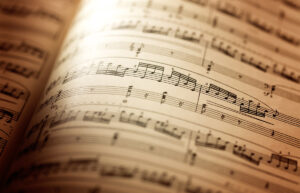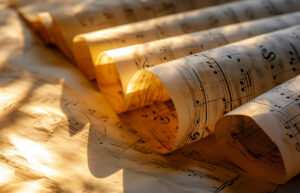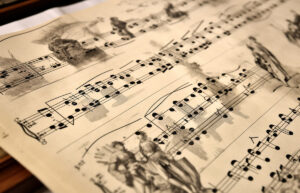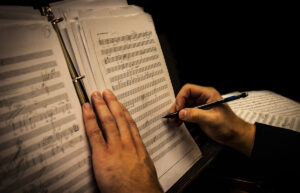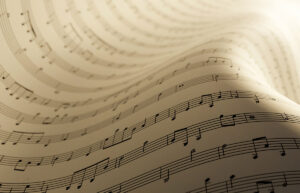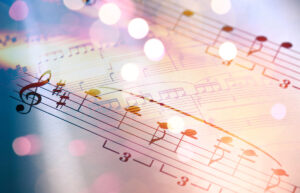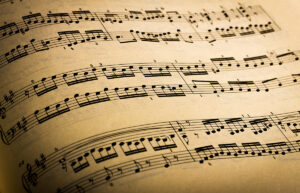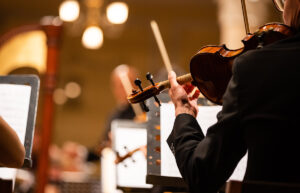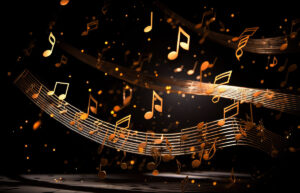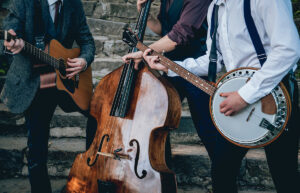What is a Chord in Music: Meaning, Importance, Types, Qualities & Steps

Unlock the harmonious secrets of music as we dive into the enchanting world of chords. Join us on a melodic journey where notes come together, creating a symphony of sound that transcends individual tones. Let’s unravel the magic behind ‘what is a chord in music’ and explore how they form the backbone of musical expression.
Welcome to TheDemoStop, now join the community!
Connect with artists, fans and producers around the world.
What is a chord in music?
In music, a chord is a harmonious blend of three or more notes played simultaneously. The choice and arrangement of these notes create the emotional and tonal foundation of a musical piece. It’s not just a combination of notes; it’s the art of crafting soundscapes, influencing mood, and guiding listeners through a musical journey. Major chords offer brightness, minor chords convey depth, and the sequence of chords forms captivating progressions, shaping the soul of the music.
Why are chords important in music?
Chords play a fundamental role in music by providing a harmonic foundation that enhances the depth and emotional resonance of a composition. Beyond merely combining notes, chords enable musicians to create intricate layers of sound, fostering a sense of harmony and coherence within a piece. Understanding what is a chord in music is key to appreciating how these combinations of notes contribute to the overall sonic experience.
Moreover, chords facilitate collaboration among musicians, providing a shared framework for improvisation and composition. Whether in classical, jazz, pop, or any other genre, chords are the essential threads that weave together the fabric of musical expression. They allow artists to convey complex emotions, create memorable melodies, and establish a strong connection with their audience. In essence, the importance of chords in music lies in their ability to shape and enrich the sonic tapestry, elevating the entire listening experience.
Types of musical chords
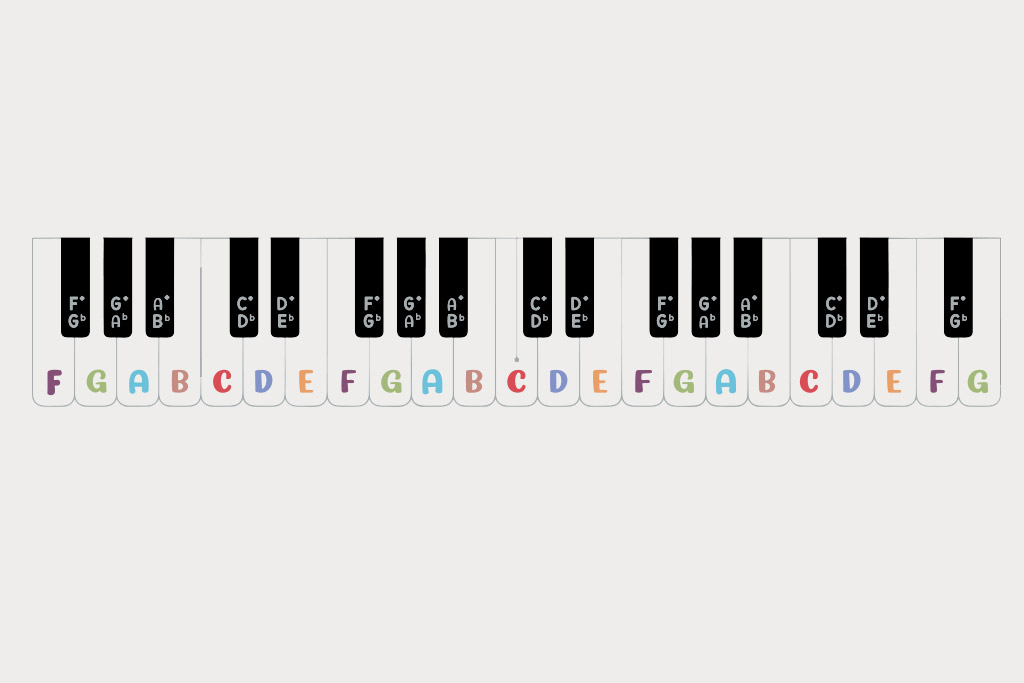
To understand what is a chord in music, you must know about the various types of musical chords. Following are the types of musical chords that are used in music:
Major chords (C, F, G)
Major chords, such as C major, F major, and G major, are characterized by a root note, a major third (four semitones above the root), and a perfect fifth (seven semitones above the root). Widely used in various genres, major chords impart a bright, happy, and stable quality to music.
Minor chords (D, A, E)
Minor chords like D minor, A minor, and E minor consist of a root note, a minor third (three semitones above the root), and a perfect fifth. These chords evoke a more melancholic, introspective, or subdued emotional tone compared to major chords.
Diminished chords (B)
Diminished chords, exemplified by the B diminished chord, contain a root note, a minor third, and a diminished fifth (six semitones above the root). Known for their dissonant and tense nature, diminished chords often create a sense of musical instability.
Augmented chords (C)
Augmented chords like the C augmented chord include a root note, a major third, and an augmented fifth (eight semitones above the root). Augmented chords introduce tension and anticipation, often used for creating a sense of musical ambiguity or leading to resolving chords.
Seventh chords
Seventh chords expand beyond the basic triad by adding a seventh note. Major seventh chords (Cmaj7), minor seventh chords (Dm7), and dominant seventh chords (G7) introduce additional complexity and color, influencing the overall mood of a piece.
Suspended chords
Suspended chords, such as Csus2 and Csus4, substitute the third with either a second or a fourth, creating a suspended, unresolved sound. Musicians often use suspended chords to introduce tension before resolving to a more stable chord.
Dyads
Dyads simplify chords to two notes, often seen in power chords used in rock and pop music. They typically consist of the root and the perfect fifth, offering simplicity and a powerful, open sound that is versatile in various musical contexts.
Chromatic chords
Chromatic chords incorporate notes outside the diatonic scale, introducing additional tones to the composition. These chords can create dissonance, tension, and unique tonal color, allowing for more experimental and avant-garde musical expressions.
Qualities of musical chords
A major part of knowing what is a chord in music is discovering its various qualities that add to the beauty of the music. Here are some qualities of musical chords.
Evoking grieving and sorrowful tones
Certain chords, especially minor ones, can profoundly evoke emotions of grief and sorrow. The melancholic quality is inherent in these chords. Such as in D minor or A minor, which creates a somber and reflective atmosphere in music.
Energetic and hopeful melodies
Conversely, major chords, characterized by a more optimistic and uplifting sound, contribute to energetic and hopeful melodies. Chords like C major or G major are often associated with brighter, positive tones, conveying a sense of joy and optimism.
Associate it with the timeless genre
Certain chords or chord progressions become iconic within specific genres, transcending time. For example, the use of major seventh chords may evoke a timeless, classic feel, linking them to genres like jazz or sophisticated pop ballads.
Welcome to TheDemoStop, now join the community!
Connect with artists, fans and producers around the world.
More Sci-Fi beat
Chords with augmented or diminished qualities, or those incorporating dissonance, can contribute to a futuristic or Sci-fi ambiance. These chords create an otherworldly, avant-garde sound, often used in film scores or electronic music to convey a sense of the unknown or the futuristic.
Express intensity
Chords, particularly those with added extensions like seventh chords, have the capacity to express intensity within a musical composition. The layering of tones and intervals amplifies the emotional depth, adding complexity and richness to the overall sonic experience. This intensity can be harnessed to convey a range of emotions, from passion to urgency, depending on the specific chord choices and their arrangement.
How to write symbols
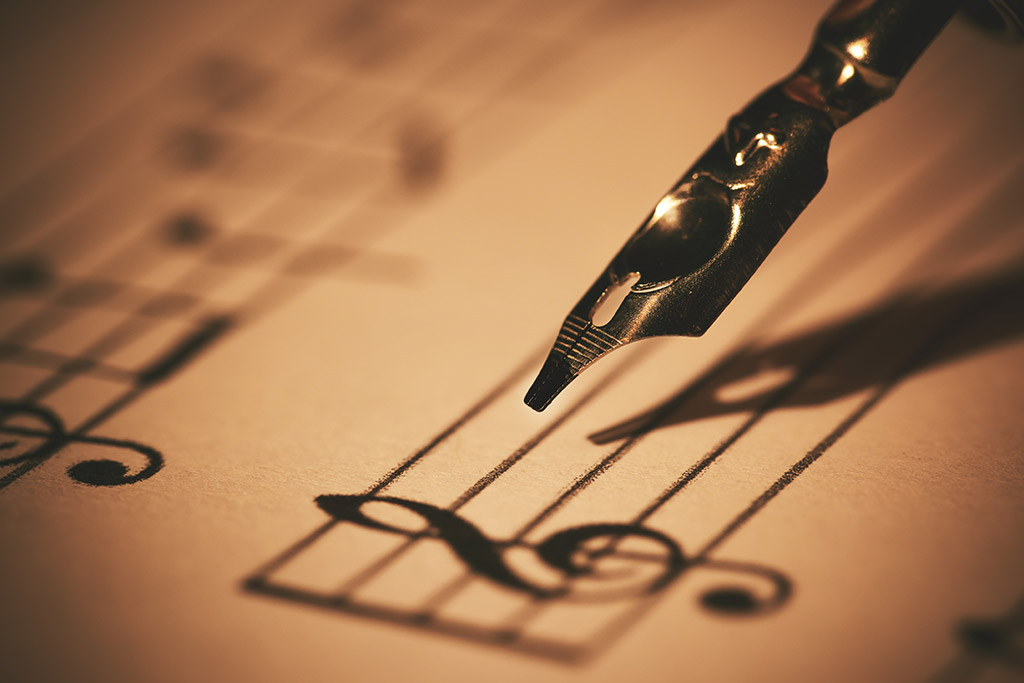
Chord symbols
Writing chords using symbols is a part of understanding what is a chord in music. It involves using letters and additional symbols to represent the root and quality of the chord. For example, “Cmaj7” denotes a C major seventh chord. Chord symbols are commonly used in jazz, pop, and lead sheets, concisely communicating harmony to musicians.
Standard notation
In standard music notation, chords are written using stacked notes. The vertical alignment of notes indicates that they should be played simultaneously. The notes in a chord are positioned on the appropriate lines or spaces of the staff, providing a visual representation of the chord’s structure. This method is prevalent in classical music and sheet music for various instruments.
Roman numerals
Roman numeral analysis is a method often used in music theory to represent chords within a key. Each chord is assigned a diatonic scale. For example, in the key of C major, the chords C major, D minor, and E minor would be represented as i, ii, and iii, respectively. This approach is valuable for analyzing chord progressions and understanding the harmonic relationships in a piece.
Nashville numbers
Nashville numbering involves assigning numbers to chords based on their position within a diatonic scale, regardless of the key. The tonic (I) represents the key’s root, and subsequent chords are assigned numbers relative to that key. This system is particularly popular in country music and simplifies transposition, as musicians can easily adapt the chord progression to different keys. For instance, in the key of C major, a chord progression of C, F, and G would be represented as I, IV, and V, and in the key of G major, it would be D, C, and D.
What is a chord progression?
Once you have understood what is a chord in music, the next step is to learn about chord progression. A chord progression is a series of musical chords played in a sequence. It forms the harmonic backbone of a piece of music, guiding its overall structure and providing a sense of movement. Chord progressions are the result of transitioning from one chord to another, creating a flow and shaping the tonal landscape of a composition.
These progressions can be simple, like the classic I-IV-V in many popular songs, or more complex, incorporating various chords and harmonic nuances. The choice and arrangement of chord progressions significantly influence the mood, emotion, and overall character of a musical piece, contributing to its melodic and harmonic identity.
Common chord progressions
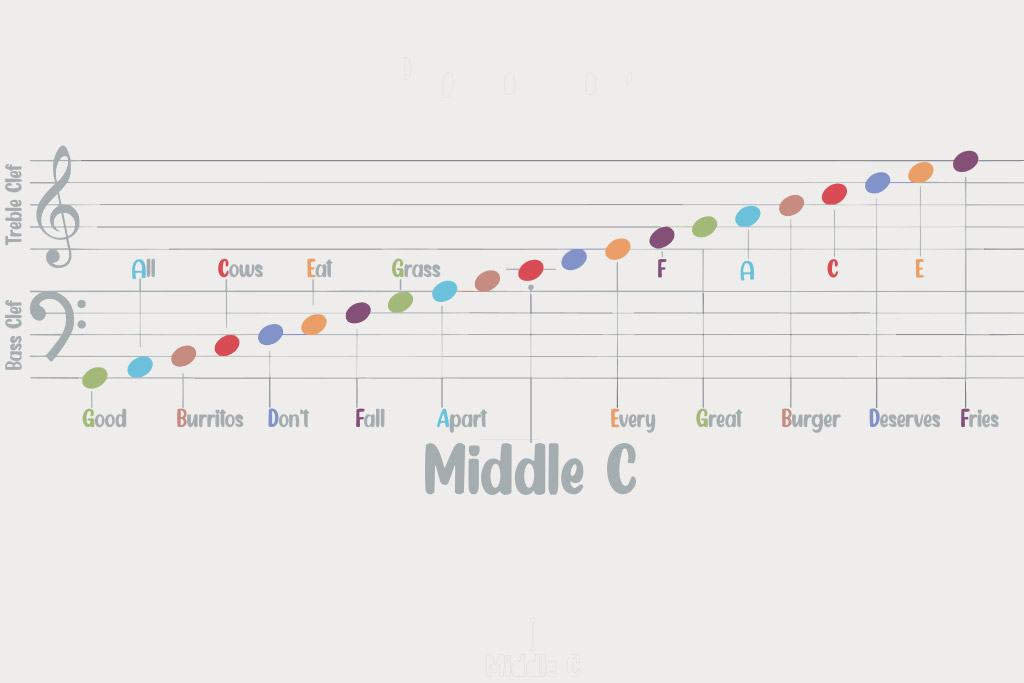
I-V-vi-IV
This chord progression, often called the “pop-punk” or “four chord” progression, is highly popular in contemporary music. The key of C major, for instance, involves the chords C-G-Am-F. Its widespread use is attributed to its catchy and versatile nature, making it a staple in pop, rock, and many other genres.
I-IV-V
The I-IV-V progression is a fundamental and widely used sequence. The key of C major would involve the chords C-F-G. Common in blues, rock, and folk music, this progression creates a robust and satisfying sense of resolution, making it a cornerstone in the repertoire of many songwriters.
ii-V-I
The ii-V-I progression is a classic jazz sequence that provides a smooth and logical movement through different tonal centers. The key of C major consists of the chords Dm7-G7-Cmaj7. This progression is crucial in jazz improvisation, offering a sophisticated harmonic structure synonymous with the genre.
I-vi-IV-V
Widely found in pop, rock, and ballads, the I-vi-IV-V progression is versatile and emotionally resonant. In C major, this would translate to the chords C-Am-F-G. This sequence offers a blend of stability and tension, contributing to its timeless appeal in various musical contexts.
I-ii-iii-IV-V
This progression introduces a sense of sophistication and melodious movement. The key of C major involves the chords C-Dm-Em-F-G. Often used in more intricate and harmonically rich compositions, it provides a nuanced journey through different diatonic chords, adding depth to the overall musical experience.
Welcome to TheDemoStop, now join the community!
Connect with artists, fans and producers around the world.
Conclusion
What is a chord in music?
A chord in music is a harmonic combination of three or more notes played simultaneously, forming the basic building block of harmony in musical compositions.
Why are chords important in music?
Chords are vital in music as they shape harmony, providing depth and emotion to compositions. They define the tonal character, influence mood, and guide listeners through a musical journey, serving as the foundation of harmonic structure.
Types of musical chords
- Major chords (C, F, G)
- Minor chords (D, A, E)
- Diminished chords (B)
- Augmented chords (C)
- Seventh chords
- Suspended chords
- Dyads
- Chromatic chords
Qualities of musical chords
- Evoking grieving and sorrowful tones
- Energetic and hopeful melodies
- Associate it with the timeless genre
- More sci-fi beat
- Express intensity
How to write chords
- Chord symbols
- Standard notation
- Roman numerals
- Nashville numbers
What is a chord progression?
A chord progression is a series of musical chords played in a sequence, forming the harmonic foundation of a piece and influencing its overall mood and structure.
Common chord progressions
- I-IV-vi-IV
- I-IV-V
- ii-V-I
- I-vi-IV-V
- I-ii-iii-Iv-V
FAQs
What is a chord in music?
A chord in music is a simultaneous combination of three or more notes played together, creating harmony. Chords provide the harmonic foundation for melodies and are essential building blocks in music composition.
Why are chords important?
Chords play a crucial role in music by contributing to harmony and enriching compositions with depth and emotion. They establish the tonal quality, affect the mood, and lead listeners on a musical voyage, serving as the cornerstone of harmonic arrangement.
What are the different types of musical chords?
- Major chords (C, F, G)
- Minor chords (D, A, E)
- Diminished chords (B)
- Augmented chords (C)
- Seventh chords
- Suspended chords
- Dyads
- Chromatic chords
Why are chord progressions important?
Chord progressions are essential in music as they create a sense of movement and guide the structure of a piece. They significantly influence its emotional impact and mood.
What impact do chords make on a song?
Chords in a song significantly influence its emotional tone, mood, and overall structure, contributing to its depth and harmony.
What are the qualities of musical chords?
- Evoking grieving and sorrowful tones
- Energetic and hopeful melodies
- Associate it with the timeless genre
- More sci-fi beat
- Express intensity
How to write symbols?
- Chord symbols
- Standard notation
- Roman numerals
- Nashville numbers
What is a chord progression?
A chord progression is a series of chords played in succession, shaping the harmonic structure of a piece of music. It provides the framework for the harmony in the composition.
What are the 5 common chord progressions every musician should know?
- I-IV-vi-IV
- I-IV-V
- ii-V-I
- I-vi-IV-V
- I-ii-iii-Iv-V
What are major chords?
Major chords are harmonious combinations of three notes: the root, a major third, and a perfect fifth. They produce a bright and positive sound in music.
What are minor chords?
Minor chords consist of three notes: the root, a minor third, and a perfect fifth. They create a somber or melancholic sound in music.
What are diminished chords?
Diminished chords are composed of a root, a minor third, and a diminished fifth. They yield a dissonant and tense quality in music.
What are augmented chords?
Augmented chords are formed by combining a root, a major third, and an augmented fifth. They result in a tense and suspenseful sound in music.

















